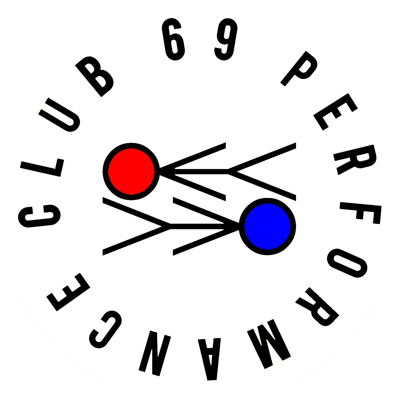IN THE HISTORY OF FINE ART, the act of depicting the artists’ daily life or experience became the common subject matter in most distinguished artworks. This tradition of depicting daily life has emerged plenty since the genre of impressionism grew in Europe in the 19th century, with its act of directly depicting the occurrences in society as objects or things that are very personal to the artist. In impressionism, the art attaches to the real event. The gaze toward an occurrence or object is transferred to the canvas through sensory impressions. One of most often depicted subjects is the drinking festivities involving liquor. One time in the 17th century, many French and Dutch painters depicted the condition of peasants who spent their days drinking wine. Such a depiction exists in The Drinking Peasants (1620-1630) by Adriaen Brouwer and Peasants Drinking in A Tavern Interior (1676-1704) by Egbert van Heemskerk. In that romantic period, painters depicted every occurrence as full of drama, and this includes the event of being drunk. I remember one of my favorite paintings when I was in college; The Card Player (1890) by Paul Cezanne that depicts two peasants from Jas de Bouffan, Aix en Provence, France, who were immersed in their card game and a bottle of wine. The Card Players is different from the usual paintings in the 17th century. It did not depict the craziness of being drunk. Instead, Cezanne poetically replaces the drunkenness by portraying the two figures in the canvas fully immersed to their cards, while a bottle of wine accompanies them. This painting is one of Cezanne’s best artwork in his last period.

The tradition of drinking liquor does not only occur in Europe. It is also part of a tradition in many regions in Indonesia, from the circle of peasants to urban workers. Here, people also know various kinds of local liquor, such as cap tikus, tuak, arak bali, sopi, and ciu that come from the fermentation of rice or sap of various palm trees and tropical fruits. Our people have been consuming these drinks for centuries. Aside from taking part in amity festivities, so often liquor is also inseparable from the locals’ religious rituals in entering the transcendence world of our ancestors. Although it has been part of our culture, there are fewer artworks that record the event of drunkenness here. It might relate to the religious moral regulation that defines liquor as a source of sin and prohibits it. The formal law also considers these local liquors as illegal. As a subject of art, indeed, we need to frame not only the drunkenness of these drinks but how it also plays a role as a social bond among the people in certain parts in Indonesia.
When discussing how to frame the culture of drunkenness into an artwork, Oh Parmitu (The Supper) – a performance by Otty Widasari – is an important work to observe. A famous Bataknese song composed by Nahum Situmorang inspires the title of this work. The song’s title is Lisoi, which means Oh Drinking Pal. This song always becomes the main song in the amity festivities in lapo (Bataknese drinking stall) and Bataknese parties in general. The lyric in Lisoi is a depiction of how harmonious the Batak community is. In such a simple song, their strong kinship was shown. They amuse each other in grief and laugh together joyfully.

Oh Parmitu was performed on 14 December 2018 in Ilmin Museum of Art, Seoul, South Korea, in an annual performance art festival titled “Perform” held by one of the biggest museums in Seoul. This performance occurred by presenting the performer on a stage with a screen behind it, projecting the performance itself as a live event captured by a camera connected to YouTube. Aside from the participants in the museum, people around the world could also witness the performance by watching it on YouTube.
I watched the performance in Indonesia through online media when the performance was held in Seoul. Otty started to ascend the stage in the performance space in the museum, carrying a bottle of red wine and a goblet glass. On the table, a metronome stood still. She took out two wooden chopsticks from her jacket. Then, she started to set her metronome in a slow tempo. She opened the wine bottle and poured it to her glass. After finishing the first glass, she started hitting the table using her wooden chopsticks, following the metronome’s rhythm. One two beats were filling the interlude between the metronome beats. This constant beat occurred for several minutes. Then she changed the metronome’s speed, consistently repeating the same activities: pouring down the wine, drinking it, then started hitting the table and an empty glass using the wooden chopstick, following the metronome’s tempo. She kept doing it in the first three parts. Then she shifted the table and seat position to move forward to the audiences – closer to the camera. Like she did before, she started the same activity; pouring down the wine, drinking it, then started hitting the table and an empty glass by following the metronome’s tempo in which the speed has been accelerated from the previous pace. She kept repeating it in the next parts by following the metronome’s rhythm, which becomes even faster. In every acceleration, the artist attempted to follow the measured constructed tempo under her changing consciousness due to alcohol’s influence. In the last minutes, the beat was even faster. Otty seemed to go beyond her consciousness to be able to follow the metronome’s rhythm she set. The breaking of a wine glass she hit ends this scene.



Oh Parmitu by Otty Widasari performed on 14 December 2018 in Ilmin Museum of Art, Seoul, South Korea.
Besides the aforementioned scene, the screen behind her showed a live recording of the performance – a camera captured it from the front. Otty intentionally presents the projection of video feedback resulting from the position of the camera that captures the performance activity and the recording result projected on the screen. The camera position produced noise video wherein the recording was replicated electronically and became an infinite layer. Every layer creates a delay in the projection, and it provides a repetitive effect with a few seconds delay from the live projection. At the beginning of the emergence of video art in the USA and Europe, video feedback technique was one of the ‘visual languages’ used widely to construct the visual illusion of an infinite world. Thus, in the 1970s, noise video feedback was considered as psychedelic visual forms, and it was often related to the ‘psychedelic state’ experienced by the drug users and psychedelic musicians at that time. In the 1990s, video feedback technique was a trend in the discotic in many parts of the world. Otty consciously used this video feedback illusion in Oh Parmitu to reveal the layers of simulations that happened toward a performance artist during a performance. Aside from the video feedback effect, the sound produced during the performance simultaneously also created feedback sound that forms new layers of sound. That feedback sounds also gave the illusion of a sound other than the one produced by the chopsticks that hit the table and the goblet glass or the consistent sound from the metronome. The audiences directly took in Oh Parmitu not only as performance art but also as a piece of experimental music or sound performance. Especially by referring to the strict structure of pattern with acts and a highly measured tempo conducted by Otty on the objects and technology that produce sound.
Oh Parmitu consists of four acts. In every act, there occur repetitions of the same scene. The difference of every act comes in the form of different intensity levels wherein the role of metronome’s beats to regulate the tempo of movement and sound becomes the mainframe. Every tempo will decipher layers of sound and form, by drifting the performer into the formation she has consciously designed. Those layers are simulated again through the recording from the camera, deciphered in the video feedback repeatedly. Otty purposely uses delay through the limit of internet technology, which makes the live streaming’s visual creates unexpected delays. It makes the live streaming projection halted because of an unstable internet connection. Here, we can see how every layer was deciphered with different possibilities in which the live performance that is being projected ‘live’ through internet connection will produce a ‘suspended’ occurrence. In those delays, the audiences could also enjoy the congregating layers of visual and sound during the performance. Every change in the tempo initiated by Otty will take us to anticipate the possibility of sound and movement that might appear afterward. Aside from that, the projection background also creates a visually enigmatic effect on the performance itself.
This 50-minutes performance used up one-liter wine until its end. During the performance, Otty pushed the limit of her body’s ability in terms of consciousness, when it is stimulated by using liquor. Biologically, the body will react directly when an amount of chemical stimulation enters it. Alcoholic drinks in a certain amount will change the endurance ability of the neurotic consciousness because of the continuous stimulation on the brain and heart organ. In Oh Parmitu, Otty consciously conducts a test on the level of neurotic consciousness and unconsciousness through a complex stimulation. She uses not only liquor but also mathematical count in metronome’s beats that continuously force her to stay conscious. Chemically, she stimulates her body by using liquor. Then, she stimulates her hearing sense by using measured sounds. Cognitively, she brings forth objects with possibilities of activities or events, such as a bottle of wine, goblet glass, metronome, chopsticks, table, chair, and even the performance space. Through the dramaturgy of space, she puts objects and visual possibilities in a measured way; the camera position, projection screen, and the position where she presented herself in front of the audience, which kept shifting until the end of the performance to several spots she had designed.
In Oh Parmitu, we can see how the staging is carefully measured, the same as construction in a film’s plot wherein every act has its intensity and drama. The performance purposely locates the focus of spotlight on one point – in the middle of the stage – which makes the space outside it obscure. In the first act, Otty was outside the spotlight and slowly started her activity in the dim light. In the next act, she shifted and sat precisely in the center of the spotlight, where she conducted the play of metronome’s sound. Here, she started to play with sounds that disturb the “order” produced by the metronome’s sound. Feedback video that brings forth layers of infinite frames, followed by mixed sound with shrill feedback sound from layers of repetition, as well as the beats she played. In the end, she was in the obscure zone again, precisely in front of the audience. If we observe it from the beginning of the act, we can see the division of ‘frame’ that refers to the presence of a camera framing the position of the performer on stage. Oh Parmitu frames the occurrence in the camera frame by using long-shot, medium-shot, medium-close-up, and close-up. It creates a distinctive cinematic effect from merely an event of performance art.
By observing further, we can understand how Otty’s performance dismantles layers of media technology work that is controlled in a system, and it becomes autonomous. She demolished the control upon produced contents and released it to infinite spaces. Machine or media technology works with their system, as seen in the performance on how the live-streamed performance was replicated infinitely using YouTube until it reaches the point of no control or becoming automatic. From here, we can see how the autonomous ‘machine’ work will go against its creator in the end, like the Frankenstein syndrome in a novel, or what we know widely as the conception of humanoid and famous robota from Czech. From this perspective, we can see how Otty questions modernity and conceptions that come with it in our civilization today. Modernity is essentially something measurable and controlled in the mechanism of scientific knowledge. But in practices that apply in society, the control and mechanism of the system may become unmanageable.
In the history of performance art in Indonesia, there is less artwork that questions the aspects of media technology and its relationship with our modernity. Moreover, I rarely found the one that makes “drinks” as an aesthetic frame to enter that systematic space. Our works of performance art still dwell in the realm of political statement and subjective expressions. Awareness of media practices (mass media, social media, and its technology) often escapes from art practices, especially performance art. Oh Parmitu gives different space in our performance art. It makes the prevailing practices in our society (tradition) as an entrance to criticize itself and our contemporary spaces. Because somehow, modernity has also become a ‘ghost’ in the spaces of no control named media technology.
Returning to The Card Players (1890) by Paul Cezanne, it makes me smile how Oh Parmitu by Otty seems to complete the political dimension that I admire in that painting. In this performance, surely there is no drinking companion or opponents to play cards. Instead, the audiences in the performance space in the museum or the one from all around the world who watch the performance live-streamed on YouTube is her drinking companion. Through this performance, Otty invites her drinking companion to laugh at the ‘ghost’ of modernity that has become part of our daily life. “Sirupma, sirupma, dorgukma, dorgukma ingkon rumar doi, Lisoi! Oh Parmitu” (gulp it down, gulp it down, swallow it, swallow and finish it, Lisoi! Oh, drinking pal).




